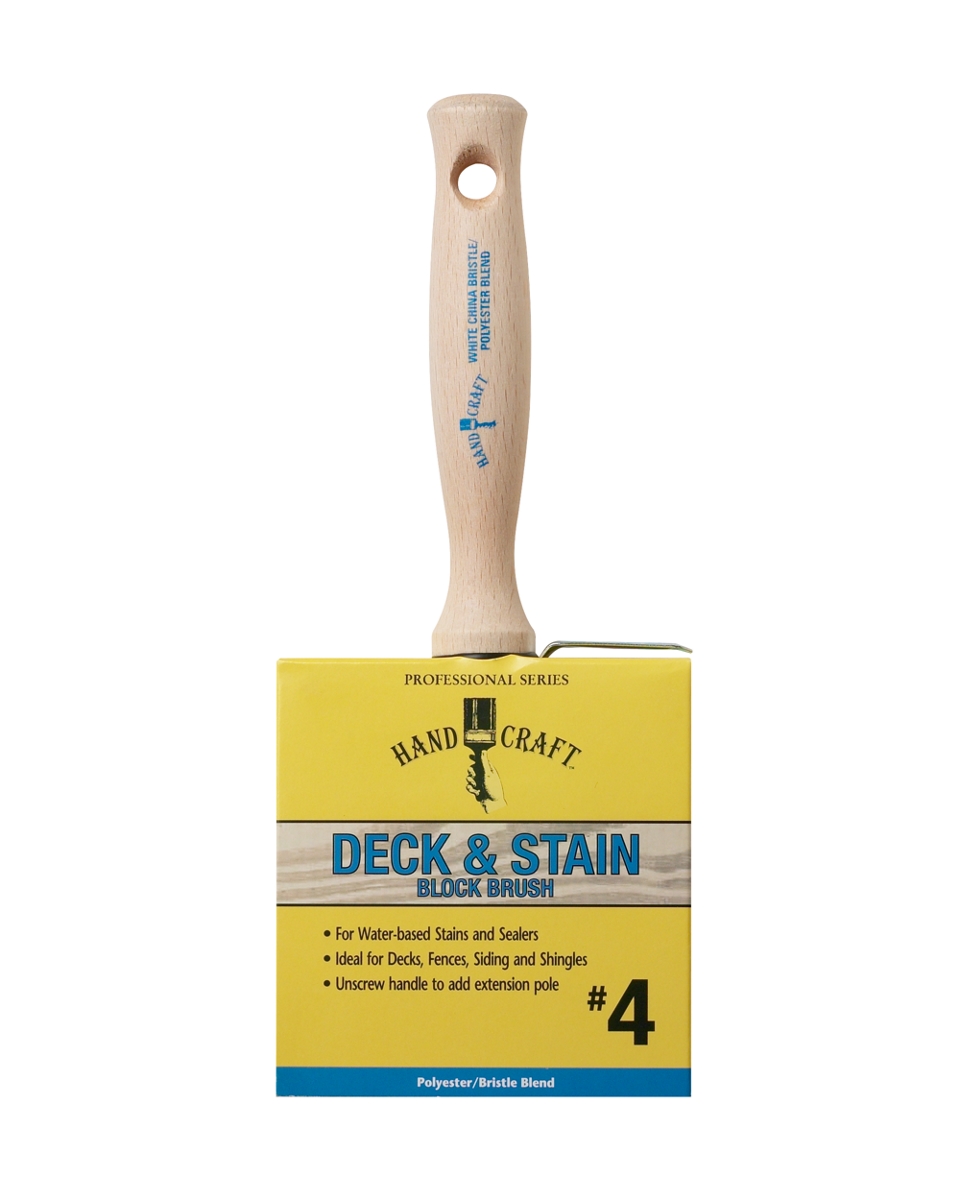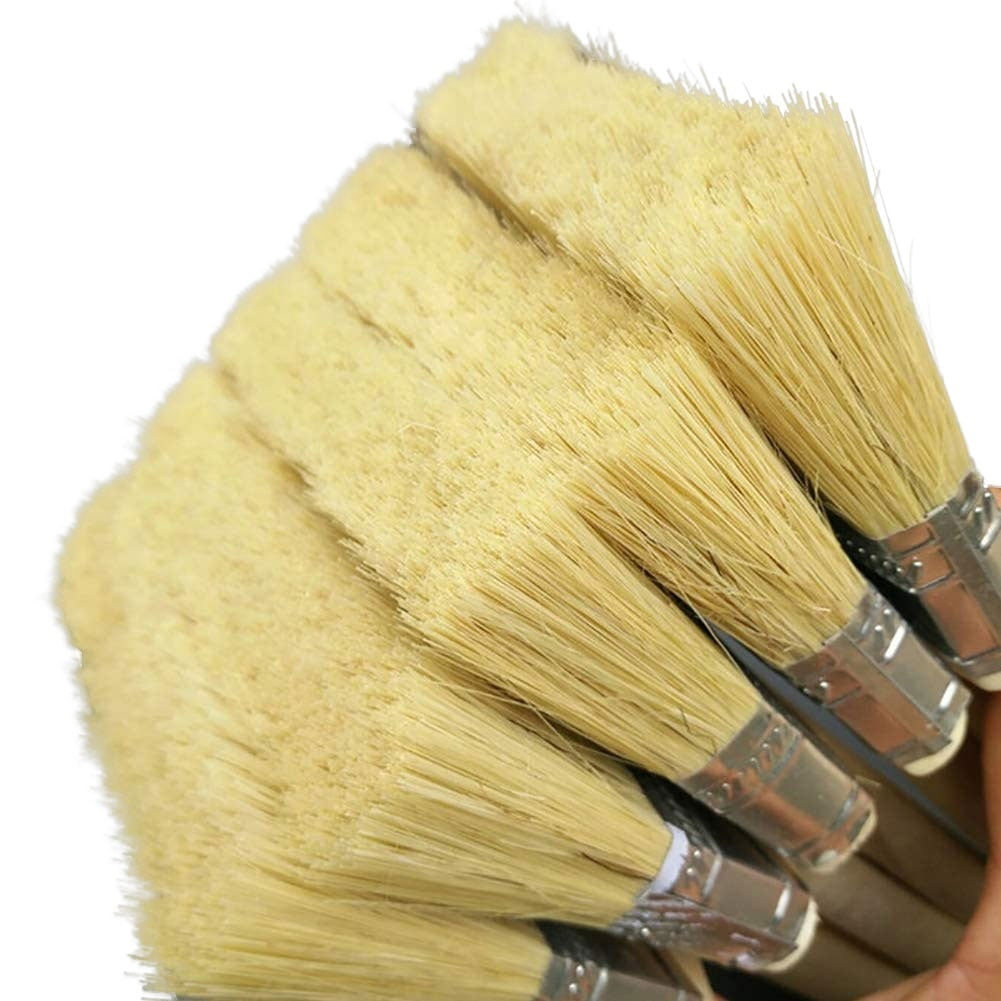Use brushes for staining or finishing. Rinse well after use. For Polycrylic® Brushes, clean with soap and water. For Wood Finish™ and Polyurethane brushes, clean with mineral spirits or paint thinner, following to manufacturer's safety instructions. Store in its cardboard package between uses. Purdy 3-Pack XL Nylon- Polyester Blend Angle Multiple Sizes Paint Brush Set. The Purdy XL brushes feature the iconic copper ferrule. Purdy loads the brush with just the right blend of Dupont solid, round and tapered Tynex and orel filaments for brushes that perform no matter what the job.
There are paint brushes made for oil based products and brushes for water-based products. Brushes come in a variety sizes, shapes, handle types and of course, different qualities. Choosing the right brush will make your work easier, faster and better.
Bristle Type
Natural bristles typically are made with animal hair. Chinese bristle is usually made with hog's hair or ox hair. They are best for oil based paints, varnishes, shellacs, and other finishes. Natural bristles should never be used with water based (latex) paints. The water is absorbed by the natural bristle and causes the brush to swell up. Natural bristles develop splits in the tip (flagging) which results in smoother application of the paint and thus fewer brush strokes.
Synthetic bristles include nylon, polyester and nylon/polyester blend. A synthetic bristle is the proper choice for water based (latex) paints. Nylon and nylon/poly blend brushes can be used for oil or water based paints, but a polyester brush is best suited only for latex paints.
Foam brushes can be used for oil or water based paints. They work best with thin products, like stain and polyurethane finishes. They wear out quickly and are best used as throw away task brushes. Extended use of a foam brush can result in bits of the foam breaking off and sticking to the finish.
Brush Size
Choose a brush that matches the size of what you are painting. Wide brushes hold a lot of paint and cover more area and so are the best choice for painting walls. A small brush (1 to 2 inches) should always be used for painting narrow trim and small surfaces. Don't turn a wide brush sideways to use the narrow edge, that will damage the brush.
Brush Task
Stain Paint Brush Photoshop
Brush size is a factor in the selection of the right brush, but the cut and tips of the bristles are also a factor. A sash brush is sized for fine work on window sashes and trim. An angled sash brush cuts the bristles across the width at an angle, allowing more control in delicate, close-in work.
The tips of some brushes are beveled across the thickness of the brush. The bevel allows more control for 'cutting-in' paint; for example, cutting-in the line between a wall and the ceiling.
Brush Quality
The quality of a brush is reflected in the price. A quality brush has more bristles, properly sized-sized spacers between the bristles, a rust-resistant ferrule to secure the bristles and uses top-quality bristles. A quality brush will hold more paint, will provide smoother, brush mark free results and, with care, will last a lifetime.
Cheap brushes will rust, lose bristles and typically have a large spacer that reduces the number of bristles. Fewer and low quality bristles means more dipping into the paint can and more work in trying to get a smooth, brush-mark free finish.
Handle Type
Handles come in bare wood, plastic or lacquered wood. Most professional painters choose an unfinished wood handle because they are easy to hold and are more comfortable.
Gel Stain Paint Brush
Handle shapes also vary. Beaver-tail handles bulge in the middle, helping you grip it in your palm. Rat-tail handles are long and straight making them easier to hold for fine detail work. Many other shapes are available and your selection should be made based upon comfort.
Stain Paint Brush


Solid Stains deliver rich, opaque, vibrant color for most every exterior surface. Cabot O.V.T. Solid Color Stain is specially formulated to provide long-lasting colors that keeps exterior surfaces maintenance-free for years. Review our opacity scale to determine your perfect balance of color and protection.
- Gray Moss
- Juniper
- Napa Vine
- Shade Tree
- Hedgerow
- Thicket
- Mulberry
- Sycamore
- Sagebrush
- Rocky Tundra
- Wooded Bog
- Balsam Pine
- Arboretum
- Allagash
- Mountain Laurel
- Evergreen
- Deep Forest
- Pacific
- Chesapeake
- Federal Blue
- Newport Blue
- Bluestone
- Spruce Blue
- Foothill
- Newburyport Blue
- Slate Gray
- Dark Slate
- Black
- Seacoast Gray
- Silver Beech
- Cape Cod Gray
- Dune Gray
- Driftwood Gray
- Fieldstone
- Pepperwood
- Shale
- Granite
- Beechwood Gray
- Pewter Gray
- Smoke Blue
- Victory Gray
- Dark Gray
- Beachgrass
- Salt Marsh
- Beige
- Sienna Sand
- Colonial Yellow
- Desert Sands
- Golden Husk
- Desert Blush
- Dusk
- Ponderosa
- Thatch
- Mountain Brush
- Acorn
- Taupe
- Coral
- Oracle Sun
- Cavalry
- Rose Quartz
- Earthen Clay
- Terra
- Sequoia
- Redwood
- Brickstone
- Indian Corn
- Tile Red
- Baked Brick
- Barn Red
- Plum Island
- Frontier
- New Cedar
- Canyon
- Red Cedar
- Ochre
- Sandstone
- Chestnut Brown
- New Redwood
- Bark Mulch
- Oak Brown
- Spanish Moss
- Mission Brown
- Burnt Hickory
- Bark
- Cordovan Brown
- Tuscan Gold
- Sky Gray
- Quarry Stone
- Navajo White
- Cinder
- Glacier
- White
- Silver Lining
- Foghorn
- Linen
- Milkweed
- Nantucket White
- Heather
- Captiva
- Snowfield
How To Clean Oil Stain Paint Brushes

Use DeckCorrect™ by Cabot® on hard-working, horizontal surfaces and the matching solid color acrylic stain on the verticals. Choose from many beautiful colors to transform your deck!
- Napa Vine
- Shade Tree
- Hedgerow
- Thicket
- Sycamore
- Sagebrush
- Rocky Tundra
- Wooded Bog
- Arboretum
- Allagash
- Mountain Laurel
- Evergreen
- Deep Forest
- Newport Blue
- Spruce Blue
- Newburyport Blue
- Dark Slate
- Black
- Driftwood Gray
- Pepperwood
- Granite
- Beechwood Gray
- Victory Gray
- Dark Gray
- Salt Marsh
- Beige
- Desert Sands
- Golden Husk
- Acorn
- Cavalry
- Terra
- Sequoia
- Redwood
- Brickstone
- Indian Corn
- Tile Red
- Barn Red
- Frontier
- New Cedar
- Canyon
- Red Cedar
- Ochre
- Sandstone
- Chestnut Brown
- New Redwood
- Bark Mulch
- Oak Brown
- Spanish Moss
- Mission Brown
- Burnt Hickory
- Cordovan Brown
To choose the right stain, you must first determine your desired balance of color and protection, which is also known as opacity.
- Solid Stain & DeckCorrect™ Resurfacer
- Color Tools
- Exterior Colors
Stain colors for your floor
Choose from a variety of custom colors to enhance your floor's wood grain.
Learn the basics of staining
Understand the proper techniques for staining tables, enhancing woods and more.


